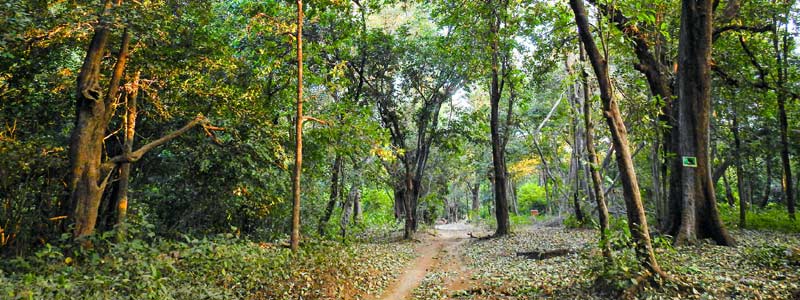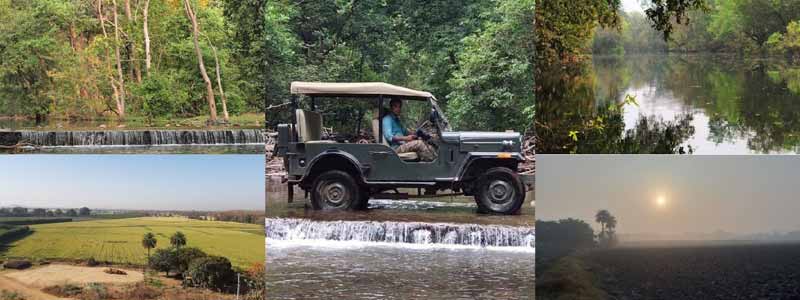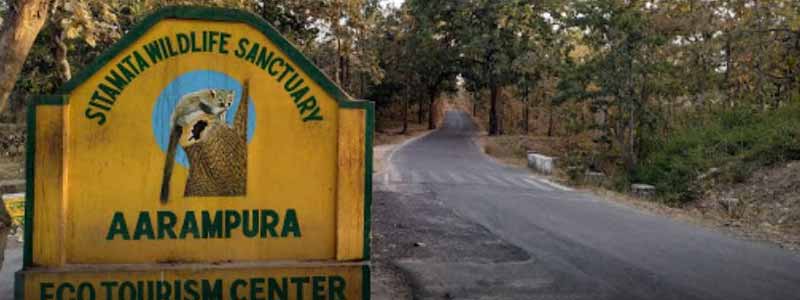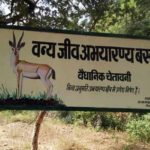Sita Mata Wildlife Sanctuary Chittorgarh is one of those epic wildlife attractions where nature coexists with religious and mythological beliefs. As per mythology, Devi Sita spent her days of exile in the deep woods with Luv and Kush, the twins born to Sita Mata and Lord Rama. And hence, the sanctuary got its name from here.
From a wildlife photographer’s perspective, Sita Mata Wildlife Sanctuary is one of those rare wild habitats where I have spotted the highest number of mammal species. The wildlife reserve is popular as the biodiversity hotspot of Rajasthan. It is home to the largest biota of the state. A wide variety of flora and fauna mark the uniqueness of this wild haven.
The sanctuary stretches over a huge area of 423 sq km. It is situated in the South-East region of Rajasthan in Chittorgarh, Pratapgarh and Udaipur District. The confluence of the ancient mountain ranges Arawallis, Vindhyas and Malwa plateau make the land highly undulated. Ancient Valmiki Ashram and Lakhiya Bhata are the places of attractions located inside the sanctuary. Drawings of prehistoric animals engraved on rocks in Lakhiya Bhata is a must-watch for history lovers.
Having the highest number of animal and plants species, Sita Mata Wildlife Sanctuary is considered one of the richest sanctuaries. Approximately 325 species of birds, 50 species of mammals, 40 species of reptiles, 30 species of fishes and 9 species of amphibians are can be spotted here. As we drive deep into the jungle, Leopards, Indian pangolin, Striped Hyenas, and four-horned Antelopes maintain the thrill. During the sunset, we can see Flying Squirrels gliding from one tree to another. Rusty-spotted Cat and Black Napped Monarch are utter beauty to see Wildlife in Rajasthan.
Sita Mata Wildlife Sanctuary is a dwelling to over 800 plant species out of which 108 species are identified as medicinal herbs. The sanctuary is covered with a tropical dry deciduous vegetation that is nourished by several freshwater bodies that flow through the jungle. It is the only forest region where more than half of the trees are Teak Salar, Tendu Peepal, Gulmohar, Amaltas, Bakayan, Mahua, Sindoor and Rudraksha.

Geography of Sita Mata Wildlife Sanctuary
Sita Mata Wildlife Sanctuary lies at an altitude ranging from 280 and 600 metres above average sea level. It receives an average rainfall of about 756 millimetres annually. During summers the temperature varies from 32 to 45 degree Celsius whereas during winters it varies from 6 to 14 degree Celsius. Seasonal rivers including Tankiya, Budhho, Sitamata, Karmoi and Jakham meander through the dense forest among which Jakham is the most significant one.

Flora of Sita Mata Wildlife Sanctuary
The main vegetation of Sita Mata Wildlife Sanctuary comprises dry deciduous forest which exhibits an extremely rich flora. Most of the vegetation in the sanctuary consists of Teak with high building value. Other trees include Neem, Babool, Peepal, Tendu, Salar, Bamboo, Ashok, Arinja, Mahua, Amla, Semal, Bel and many others. Shrubs and climbers are also found in abundance. Several herbs having high medicinal value grow in the forest out of which 17 varieties belong to the endangered species. In olden days, 1828 AD, a separate state forest department was established for managing the rich biodiversity of this region.

Fauna of Sita Mata Wildlife Sanctuary
Sita Mata Wildlife Sanctuary is a paradise for bird watchers as the place hosts a huge assemblage of exotic birds including both native as well as migratory. Common varieties found here comprise White Necked Stork, Painted Stork, Little Egret, Lesser Whistling Thrush, Black-Winged Stilt, Red Turtle Dove, Green Pigeon, Rose-Ringed Parakeet and others.
The birds Black-Necked Monarch and White-Throated Ground Thrush were discovered in the sanctuary only. Vegetarian Mammal Flying Squirrel is the most attractive member of Sita Mata Wildlife Sanctuary which glides from one tree to another. Having nocturnal feeding activities, these species hides in the hollow of Mahua tree during day time. Other fauna of the sanctuary include Wild Bear, Spotted Deer, Porcupine, Jungle Cat, Jackal, Hyena, Leopard, Pangolin, Caracal, Four-Horned Antelope, Deer and others.
Best Time To Visit Sitamata Wildlife Sanctuary
The sanctuary is best explored during the day in the winter season as the weather stays pleasant and one can spot a number of migrating birds and local species of animals.
How To Reach Sitamata Wildlife Sanctuary
Most routes in the region pass through the Sitamata Wildlife Sanctuary and hence road connectivity is quite good. Buses regularly ply from Chittorgarh to other towns through the sanctuary. Tourists can book cabs or rent taxis to reach the reserve. Those travelling by private vehicles can reach Sitamata Wildlife Sanctuary from Pratapgarh via Udaipur – Pratapgarh road.
By Air : Udaipur Airport is the nearest airport to the park.
By Rail : Mandsaur Railway Station in Madhya Pradesh is the nearest station to Pratapgarh about 28km away while Chttorgarh Railway is the nearest in Rajasthan about 110 km away.
By Road : Daily bus services connect pratapgarh with Chittorgarh (110 km), Banswara (85 km), Udaipur (165 km), Dungarpur (195 km), Rajsamand (133 km), Jodhpur (435 km), Jaipur (432 km) in Rajasthan; Ratlam (85 km), Mandsaur (32 km) in M.P. and Delhi (705 km).








